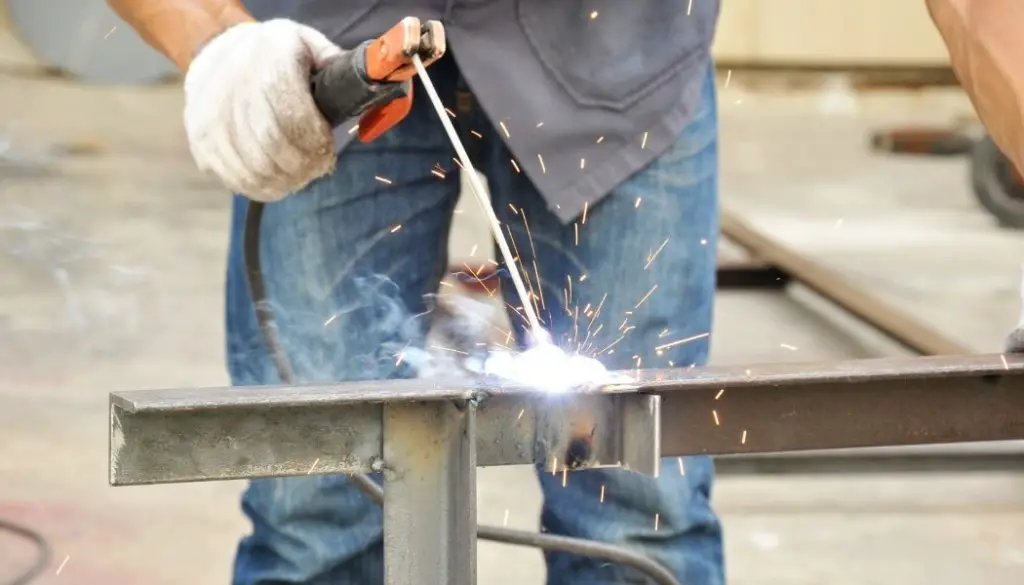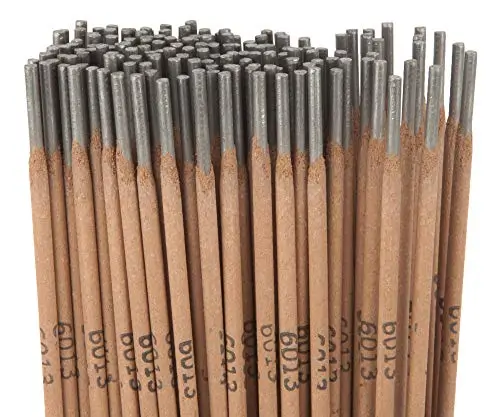In a nutshell, the numbers on a welding rod affect the quality of the weld. The series of characters on these rods come from a standard reference developed by the American Welding System (AWS).
These codes are vital to welders to match the tensile strength needed between a welding rod and the base metal. They also determine the position, coating, and type of current of the welding rod.
In this post, I’ll be digging deeper into what these welding rod numbers mean and how to pick the correct one, so stick around!

Table of Contents
What Are the Welding Numbers?
Each welding rod has a total of five, or on rare occasions, six characters to classify which welding it best fits in. The first character is usually the letter ‘E’ which stands for ‘electrode.’
You might also find other welding rods that start with AWS, which are the developers of the formula. In other cases, the welding rod’s manufacturer replaces the letter E, depending on the brand.
There are lots of welding numbers, but the most popular ones are:
| Welding Rod | Purpose and Properties | Penetration |
| E6010 | General-purpose electrode with a tight arc that’s usually for pipe welding | Deep |
| E6011 | General-purpose electrode that’s best for rusted or dirty metal and other maintenance work | Deep |
| E6012 | General-purpose electrode that’s good for tight joints and thin sections like steel window frames and metal furniture | Medium |
| E6013 | General-purpose mild steel electrode that adapts well to thin and low-heat metals | Shallow |
| E7018 | Low hydrogen electrode with greater versatility and tensile strength | Medium to shallow |
How to Read Welding Numbers
Welding numbers can be confusing at first glance but has a simple structure once you get the hang of it. The basic structure for welding numbers is ‘EXXXX’ or ‘EXXXXX’ on rare occasions.
You only have to remember three sections to identify the purpose of the welding numbers. These sections are:
- E / the manufacturer’s initials or brand – regardless if it comes with AWS, just the letter E, or a different brand, it all stands for ‘electrode.’
- The first two (or sometimes three) digits after E – refers to the welding rod’s tensile strength in PSI (pounds per square inch).
- The last two digits after E – refers to the welding rod’s position, current, and type of coating.
Let’s take the E6010 welding rod as an example and try to dissect it per section. The first two digits, which are ‘60’ means that it has a tensile strength of 60,000 PSI.
You simply multiply the two digits by a thousand to get the welding rod’s tensile strength in PSI. Sometimes you might find that this section has three digits, such as E100XX. This would mean that it has over 100,000 PSI.
The ‘1’ determines the welding rod’s position, which in this case, means all-position. The last digit ‘0’ means it’s coated with high cellulose sodium and has a current of DC+.
You can look at the reference below to determine the position, current, and type of coating of a welding rod:
Position
- 1 – good for all positions
- 2 – good for flat and horizontal positions
- 3 – good for flat, horizontal, vertical down, and overhead positions
Current and Type of Coating
| Number | Current / Welding Polarity | Type of Coating / Chemical Composition |
| 0 | DC+ | High cellulose sodium |
| 1 | AC, DC+, and DC- | High cellulose potassium |
| 2 | AC and DC- | High titania sodium |
| 3 | AC and DC+ | High titania potassium |
| 4 | AC, DC+, and DC- | Titania and iron powder |
| 5 | DC+ | Low hydrogen sodium |
| 6 | AC, DC+ | Low hydrogen potassium |
| 7 | AC, DC+, and DC- | Iron powder and high iron oxide |
| 8 | AC, DC+, DC- | Iron powder and low hydrogen potassium |

Welding Rod Sizes
Welding rod sizes should depend on how thick the base of the metal you’re trying to weld it with is. The general rule is to avoid using a thinner welding rod than your base metal.
Otherwise, you might end up running into some welding failures.
The most common welding rod sizes are 1/8 inches, 3/32 inches, and 5/32 inches. You’ll find that most welding projects make use of these three different sizes. It’s worth noting that the diameter of its core wire determines the welding rod’s size.
Welding rods such as E6010, E6011, E6013, and E7018 are the go-to electrodes for stick welding.
Here’s a table to compare the welding rod size needed according to the thickness of the base metal:
| Thickness of the Base Metal | Welding Rod Size |
| Up to 3/16 inches | 1/16 inches |
| Up to 1/4 inches | 3/32 inches |
| More than 1/8 inches | 1/8 inches |
| More than 1/4 inches | 5/32 inches |
| More than 3/8 inches | 3/16 inches |
| More than 3/8 inches | 1/4 inches |
| Up to 1/2 inches | 5/16 inches |
How to Pick the Correct Welding Rod
Choosing the correct welding rod depends on what type of project you’re planning to work on. Try to consider the thickness of your base metal, welding positions, and joint design before buying.
This will save you time, money, and effort in case the welding project messes up.
Take note of the following in the planning stage of your welding project:
- The thickness and composition of your base metals
- The level of penetration you’ll need
- The welding positions you’ll be dealing with
- Your level of skill as a welder
It’s best to start small if you’re a beginner or only starting out as a welder. You can use bigger welding rods to get the hang of things before the tricky smaller ones.
Final Thoughts
It might seem tricky to decode a welding rod’s series of characters at first, but it gets easier once you get the gist. Any welder can attest to its importance because it could easily make or break your welding project.
The quickest way to familiarize yourself with it is by dissecting it into three sections. You can always use a cheat sheet or guide to remind yourself of what each number represents.
